
Journal of Aerospace Information Systems
Scope & Guideline
Driving Innovation in Aerospace through Open Access Research
Introduction
Aims and Scopes
- Aerospace Systems Engineering:
The journal emphasizes the integration of systems engineering principles in the design, analysis, and management of aerospace systems, promoting methodologies that enhance reliability and efficiency. - Artificial Intelligence and Machine Learning Applications:
There is a strong focus on leveraging AI and machine learning techniques for various applications in aerospace, including trajectory prediction, fault detection, and autonomous operations. - Autonomous and Uncrewed Systems:
Research on autonomous vehicles, including unmanned aerial vehicles (UAVs) and spacecraft, is a core area, exploring navigation, control, and mission planning in complex environments. - Real-Time Data Processing and Decision Making:
The journal covers methodologies for real-time data analysis and decision-making processes, highlighting the importance of timely interventions in aerospace operations. - Safety and Risk Management in Aerospace Operations:
The journal addresses safety assessment techniques and risk management strategies, focusing on enhancing operational safety in aviation and space missions. - Modeling and Simulation of Aerospace Systems:
The development and application of advanced modeling and simulation techniques for evaluating aerospace systems' performance under various conditions is a key area of research.
Trending and Emerging
- Deep Learning and Advanced AI Techniques:
There is a marked increase in research utilizing deep learning and other advanced AI methods for tasks such as trajectory prediction, anomaly detection, and autonomous navigation, showcasing their transformative potential in aerospace. - Digital Twin and Simulation Technologies:
The concept of digital twins and enhanced simulation frameworks for real-time monitoring and control of aerospace systems is gaining traction, reflecting the industry's move towards more integrated and responsive systems. - Sustainability in Aerospace Operations:
Research addressing environmental impacts and sustainability practices in aerospace, including fuel-efficient designs and emissions reduction strategies, is emerging as a significant trend. - Human-Machine Interaction and Trust:
The study of human-machine interaction, particularly in the context of autonomous systems, is becoming increasingly relevant, focusing on trust, situational awareness, and decision support systems. - Cybersecurity in Aerospace Systems:
With the rise of digital technologies in aerospace, research on cybersecurity measures and protocols to protect aerospace systems from threats is becoming a critical area of focus. - Multi-Agent Systems and Swarm Intelligence:
The exploration of multi-agent systems and swarm intelligence for collaborative operations in aerospace applications is on the rise, highlighting innovative approaches to complex problem-solving.
Declining or Waning
- Traditional Avionics Systems:
Research focused on conventional avionics systems design and implementation has decreased, possibly due to the shift towards more integrated and software-defined approaches in aerospace technology. - Basic Aerodynamics Studies:
Fundamental studies in aerodynamics, while still relevant, are being overshadowed by more advanced computational methods and simulations, leading to a decline in traditional aerodynamics research. - Manual Flight Operations:
As autonomous systems gain traction, research dedicated to manual flight operations and pilot-centric studies is becoming less frequent, reflecting a broader industry trend towards automation. - Conventional Spacecraft Design:
The focus on traditional spacecraft design principles is waning, with more emphasis now placed on innovative designs and adaptive systems that incorporate machine learning and AI. - Static Safety Analysis Methods:
Static approaches to safety analysis are being replaced by dynamic and adaptive risk assessment techniques, leading to reduced interest in traditional safety methodologies.
Similar Journals
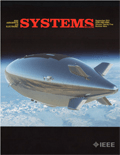
IEEE AEROSPACE AND ELECTRONIC SYSTEMS MAGAZINE
Empowering scholars with pivotal aerospace knowledge.IEEE Aerospace and Electronic Systems Magazine, published by the IEEE Institute of Electrical and Electronics Engineers Inc, stands as a pivotal resource for scholars and practitioners in the fields of aerospace and electronic systems. With an impressive impact factor and consistently ranking in the top quartiles of its categories, this journal has been dedicated to providing high-quality content since its inception in 1986. Covering a broad spectrum of topics across Aerospace Engineering and Electrical and Electronic Engineering, it garners significant attention, ranked #15 in Aerospace Engineering and #130 in Electrical and Electronic Engineering by Scopus, placing it firmly in the 90th and 83rd percentiles, respectively. The magazine’s commitment to delivering cutting-edge research makes it an essential tool for academicians, industry professionals, and students alike, facilitating advancements in technology and innovation across the globe. Submissions undergo rigorous peer-review, ensuring that only the most relevant and impactful studies contribute to the ongoing dialogue in the aerospace and electronic systems community.

NONLINEAR DYNAMICS
Bridging Theory and Practice in Nonlinear DynamicsNONLINEAR DYNAMICS is an esteemed academic journal published by SPRINGER, focusing on a diverse range of topics within the fields of Aerospace Engineering, Applied Mathematics, Control and Systems Engineering, Electrical and Electronic Engineering, Mechanical Engineering, and Ocean Engineering. Since its inception in 1990, this journal has become a premier platform for disseminating cutting-edge research and innovative methodologies from both theoretical and practical perspectives. With a high impact factor and ranked in the Q1 quartile across several engineering and mathematics categories, NONLINEAR DYNAMICS is recognized for its significant contribution to advancing knowledge and technology in nonlinear phenomena. Researchers and professionals are encouraged to engage with this journal to publish their findings and stay at the forefront of developments. Although it does not offer open access options, the journal ensures rigorous peer review, enhancing the credibility and visibility of published work.
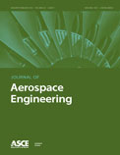
JOURNAL OF AEROSPACE ENGINEERING
Fostering collaboration for breakthroughs in aerospace engineering.JOURNAL OF AEROSPACE ENGINEERING, published by the American Society of Civil Engineers (ASCE), is a premier scholarly journal that serves as an essential resource for engineers and researchers in the aerospace engineering domain. With an ISSN of 0893-1321 and an E-ISSN of 1943-5525, this journal has been dedicated to advancing knowledge since its inception in 1988 and will continue to do so through to 2024. The journal is categorized in the Q2 quartile across multiple engineering disciplines, including Aerospace Engineering, Civil and Structural Engineering, Materials Science, and Mechanical Engineering, reflecting its reputable standing in the community. The impact factor speaks to its influence and relevance, making it a critical reference for ongoing research and innovations. Although this journal does not offer open access, it ensures that its content is comprehensive, engaging, and peer-reviewed, targeting a diverse audience of professionals, academics, and students involved in the fields of aerospace engineering and related disciplines. The journal actively contributes to shaping future engineering practices, showcasing cutting-edge research and fostering collaboration among discipline experts.

Navigation-Journal of the Institute of Navigation
Pioneering Research in Navigation and Engineering ExcellenceNavigation - Journal of the Institute of Navigation (ISSN: 0028-1522, E-ISSN: 2161-4296) is a prestigious academic journal published by the Institute of Navigation (ION) based in the United States. Since its inception in 1946, the journal has aimed to advance and disseminate research in navigation, covering critical topics within the realms of Aerospace Engineering and Electrical and Electronic Engineering. With an impressive Q2 ranking in both fields for 2023 and a notable Scopus rank positioning it within the top quartile of Aerospace Engineering, it serves as an essential resource for researchers, professionals, and students interested in cutting-edge navigation technologies and methodologies. Embracing the Open Access model since 2022, the journal ensures that its high-quality content is readily accessible to a global audience. With a commitment to fostering innovation and collaboration, Navigation plays a pivotal role in shaping the future of navigation science and engineering.
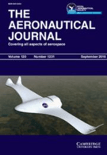
AERONAUTICAL JOURNAL
Connecting scholars to the skies of knowledge.Aeronautical Journal, published by Cambridge University Press, is a premier scholarly journal dedicated to advancing the field of aerospace engineering. With a notable impact factor, this journal holds a strong position in the academic community, ranked #53 out of 153 in the Scopus category of Aerospace Engineering, placing it in the 65th percentile. The journal has been providing a platform for groundbreaking research since its inception in 1969, and continues to be a vital resource for researchers, professionals, and students involved in aeronautics. As a Q2 journal in the 2023 Aerospace Engineering category, it offers high-quality articles that cover a range of topics within the discipline, contributing to the ongoing discourse and innovation in aerospace technologies. Although not an open-access journal, it remains accessible to a vast readership through institutional subscriptions and partnerships. The Aeronautical Journal is a crucial publication for those seeking to stay at the forefront of aerospace research and development.

Journal of Control Automation and Electrical Systems
Connecting Theory and Practice in Electrical EngineeringThe Journal of Control Automation and Electrical Systems, published by SPRINGER, is a prominent academic journal dedicated to advancing research in the interdisciplinary fields of control systems, automation, and electrical engineering. With an ISSN of 2195-3880 and E-ISSN of 2195-3899, this journal has emerged as a vital platform for disseminating high-quality research, contributing significantly to both theoretical and applied aspects of these interrelated domains. As of 2023, it ranks in the Q2 and Q3 quartiles across multiple categories, including Electrical and Electronic Engineering and Energy Engineering, showcasing its relevance and impact in the field. Although not an open-access journal, it provides rich access options for research works, ensuring that findings reach a wide audience. Researchers, professionals, and students alike can draw valuable insights from its curated articles that explore emerging trends, innovative technologies, and practical applications, thus reinforcing its position as a key contributor to the advancement of control and automation systems.
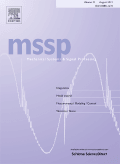
MECHANICAL SYSTEMS AND SIGNAL PROCESSING
Connecting disciplines for groundbreaking mechanical insights.MECHANICAL SYSTEMS AND SIGNAL PROCESSING, published by Academic Press Ltd - Elsevier Science Ltd, is a leading journal that bridges multiple critical fields, including Aerospace Engineering, Civil and Structural Engineering, Computer Science Applications, Control and Systems Engineering, Mechanical Engineering, and Signal Processing. Established in 1987, this esteemed journal serves as an invaluable resource for researchers, professionals, and students seeking to advance the understanding of mechanical systems and their intimate relationship with signal processing techniques. With an impressive impact factor and consistently ranked in the Q1 category across various engineering and computer science disciplines, it offers rigorous peer-reviewed articles that contribute significantly to innovation and methodological advancements in the field. Although it does not currently offer Open Access options, its publication in the United States ensures a wide dissemination of high-quality research that shapes the future of engineering. The journal's convergence until 2025 promises to foster enduring discussions and collaborations that will continue to push the boundaries of technology and engineering applications.
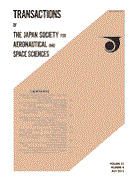
TRANSACTIONS OF THE JAPAN SOCIETY FOR AERONAUTICAL AND SPACE SCIENCES
Pioneering Research for Tomorrow's AeronauticsTRANSACTIONS OF THE JAPAN SOCIETY FOR AERONAUTICAL AND SPACE SCIENCES is a distinguished journal published by the Japan Society for Aeronautical and Space Sciences, focusing on the latest advancements and research in the fields of aerospace engineering and space and planetary science. With a broad range covering theoretical studies, practical applications, and experimental research, this journal serves as a vital platform for researchers, professionals, and students keen to explore the intricacies of aeronautics and space technologies. Although currently closed to open access, the journal maintains a significant presence in the academic community, boasting a 2023 Scopus ranking of Q3 in both of its respective fields and offering insights that contribute to ongoing discussions and innovations in aerospace. Since its inception in 1969 and with publications extending to 2024, the journal not only reflects the evolving landscape of aeronautics and space sciences but also encourages discourse that paves the way for future breakthroughs. For your engagement and contributions to this dynamic field, the TRANSACTIONS OF THE JAPAN SOCIETY FOR AERONAUTICAL AND SPACE SCIENCES stands as an essential resource.
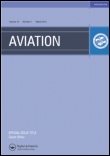
Aviation
Navigating the skies of knowledge in aviation studies.Aviation, published by Vilnius Gediminas Technical University, is a leading open-access journal dedicated to the dynamic field of aerospace engineering, with an ISSN of 1648-7788 and E-ISSN of 1822-4180. Established in 2004 and set to converge in 2024, this journal aims to disseminate high-quality research that advances the understanding and application of aerospace technology. With an impact factor reflective of its contribution to the discipline, Aviation ranks at Q4 in the Aerospace Engineering category and occupies the 80th position out of 153 in Scopus, highlighting its growing significance among scholarly publications. By providing free access to its content since 2018, the journal enhances its reach and encourages collaborative efforts in the academic community, catering to researchers, professionals, and students eager to explore innovative studies and findings within aerospace engineering. Based in Lithuania, this journal serves as a vital resource for those aiming to contribute to the future of aviation.
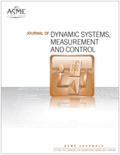
JOURNAL OF DYNAMIC SYSTEMS MEASUREMENT AND CONTROL-TRANSACTIONS OF THE ASME
Elevating understanding in dynamic systems and control mechanisms.JOURNAL OF DYNAMIC SYSTEMS MEASUREMENT AND CONTROL - TRANSACTIONS OF THE ASME is a renowned periodical published by the American Society of Mechanical Engineers (ASME), focused on advancing the field of dynamic systems, measurement, and control. With a rich publication history spanning from 1971 to 2025, this journal serves as a pivotal platform for disseminating high-quality research aimed at enhancing understanding and innovation in various sectors, including mechanical engineering, control and systems engineering, and information systems. The journal currently holds a respectable Q2 category ranking in multiple fields, reflecting its commitment to excellence and rigorous peer-review standards. Although it does not offer open access, its extensive reach within the academic community exemplifies its significance, making it an indispensable resource for researchers, professionals, and students eager to engage with cutting-edge advancements. For those seeking to expand their knowledge and contribute to the dialogue surrounding dynamic systems and control mechanisms, JOURNAL OF DYNAMIC SYSTEMS MEASUREMENT AND CONTROL stands out as a critical reference.